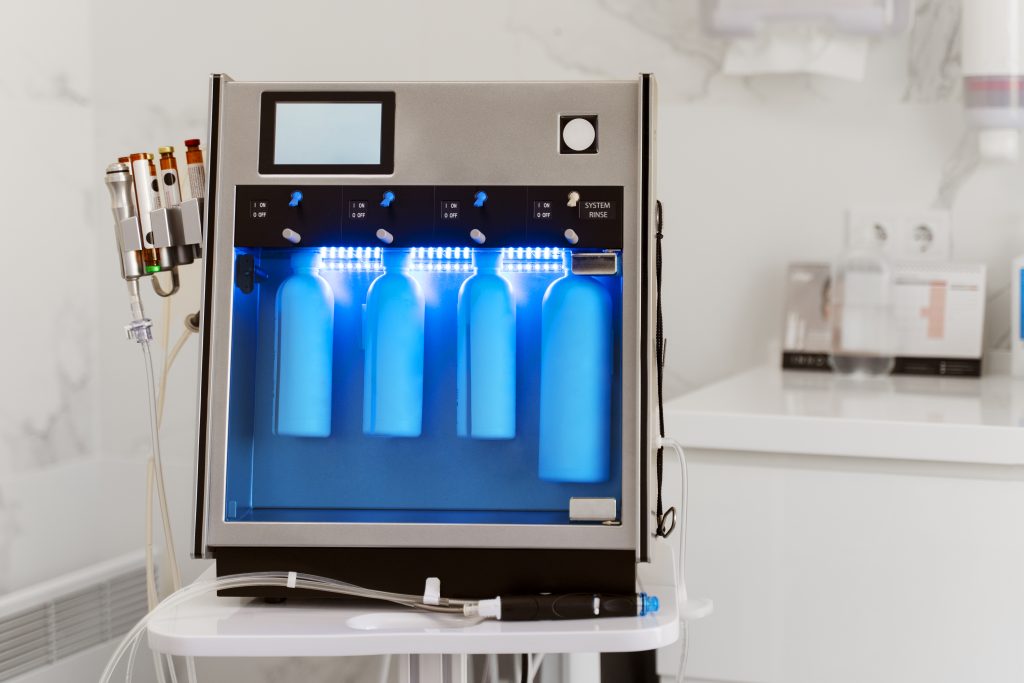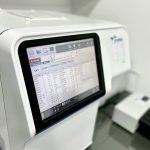UV printers, also known as ultraviolet printers, are a type of digital printing technology that uses ultraviolet light to cure or dry ink as it is printed onto a surface. Unlike traditional printers that use heat or evaporation to dry ink, UV printers use UV light to instantly cure the ink, resulting in faster printing speeds and higher print quality. This technology has revolutionized the printing industry by allowing for printing on a wider range of materials and reducing ink consumption.
The concept of UV printing dates back to the early 1900s when it was first used in the screen printing industry. However, it wasn’t until the 1990s that UV printers became commercially available. Since then, there have been significant advancements in UV printing technology, making it more efficient and cost-effective. Today, UV printers are widely used in various industries such as signage and graphics, packaging and labeling, industrial printing, textile printing, and even 3D printing.
Key Takeaways
- UV printers use ultraviolet light to cure ink, resulting in faster drying times and more vibrant colors.
- Advantages of UV printing include the ability to print on a wider range of materials, reduced waste, and lower energy consumption.
- UV printing is transforming the printing industry by enabling new applications such as 3D printing and direct-to-object printing.
- Compared to conventional printing, UV printing offers higher quality and more durable prints, but can be more expensive upfront.
- The growing demand for UV printers is driven by the need for faster turnaround times, customization, and sustainability.
- Factors driving the UV printer market include advancements in technology, increasing demand for packaging and labeling, and growth in the advertising industry.
- Emerging trends in UV printing include the use of LED curing, hybrid printing, and increased automation.
- Challenges faced by UV printer manufacturers include high costs, limited availability of materials, and the need for skilled operators.
- Key factors to consider before investing in a UV printer include print size, ink type, and maintenance requirements.
- Success stories of UV printer users include businesses in the signage, packaging, and promotional products industries that have increased efficiency and profitability with UV printing.
Advantages of UV Printing: Exploring the Benefits of UV Printers over Traditional Printers
One of the main advantages of UV printing is its faster printing speeds. Since the ink is instantly cured by UV light, there is no need to wait for the ink to dry before moving on to the next print job. This significantly reduces production time and allows for faster turnaround times.
In addition to faster printing speeds, UV printers also offer higher print quality compared to traditional printers. The instant curing of the ink prevents it from spreading or bleeding into the surrounding areas, resulting in sharper and more vibrant prints. UV printers also have a wider color gamut, allowing for more accurate color reproduction.
Another major advantage of UV printing is its ability to print on a wider range of materials. Traditional printers are limited to paper and certain types of fabrics, while UV printers can print on almost any surface, including glass, metal, wood, plastic, and even ceramics. This opens up a whole new world of possibilities for businesses in terms of product customization and branding.
Furthermore, UV printers consume less ink compared to traditional printers. This is because the ink is instantly cured on the surface, preventing it from being absorbed into the material. As a result, businesses can save on ink costs and reduce their environmental impact.
Speaking of the environment, UV printing is considered to be more environmentally friendly compared to traditional printing methods. Since the ink is instantly cured by UV light, there is no need for heat or evaporation, which reduces energy consumption. UV printers also produce less waste as there is no need for additional drying time or processes.
Applications of UV Printing: How UV Printers are Transforming the Printing Industry
The versatility of UV printers has led to their widespread adoption in various industries. Here are some of the key applications of UV printing:
1. Signage and graphics: UV printers are commonly used for printing signs, banners, posters, and other promotional materials. The ability to print on a wide range of materials allows for creative and eye-catching designs that can withstand outdoor conditions.
2. Packaging and labeling: UV printing is ideal for printing on packaging materials such as cardboard boxes, plastic containers, and labels. The instant curing of the ink ensures that the prints are durable and resistant to smudging or fading.
3. Industrial printing: UV printers are used in various industrial applications such as printing on electronic components, automotive parts, and even circuit boards. The ability to print directly onto these surfaces eliminates the need for additional labeling or marking processes.
4. Textile printing: UV printers have also made their way into the textile industry, allowing for direct printing onto fabrics such as cotton, polyester, and even leather. This eliminates the need for heat transfer or screen printing processes, resulting in faster production times and more vibrant prints.
5. 3D printing: UV printers have also been integrated into the field of 3D printing, allowing for the creation of complex and detailed objects. The instant curing of the ink enables faster printing speeds and eliminates the need for post-processing.
UV Printing vs. Conventional Printing: A Comparative Analysis
| Printing Speed | Higher | Lower |
| Printing Quality | Higher | Lower |
| Printing Cost | Higher | Lower |
| Printing Materials | Wide range of materials | Limited materials |
| Environmental Impact | Lower | Higher |
While UV printing offers numerous advantages over traditional printing methods, it is important to understand the differences between the two. Here is a comparative analysis of UV printing and conventional printing:
1. Differences in printing process: In conventional printing, ink is applied to a surface and then dried through heat or evaporation. This process can be time-consuming and may require additional steps such as lamination or varnishing. On the other hand, UV printing uses UV light to instantly cure or dry the ink as it is printed onto the surface. This eliminates the need for additional drying time or processes.
2. Cost comparison: UV printers tend to have a higher upfront cost compared to traditional printers. However, they offer lower operating costs in the long run due to reduced ink consumption and faster production times. Additionally, UV printers can print on a wider range of materials, eliminating the need for additional equipment or processes.
3. Quality comparison: UV printing offers higher print quality compared to traditional printing methods. The instant curing of the ink prevents it from spreading or bleeding into the surrounding areas, resulting in sharper and more vibrant prints. UV printers also have a wider color gamut, allowing for more accurate color reproduction.
4. Environmental impact comparison: UV printing is considered to be more environmentally friendly compared to traditional printing methods. The instant curing of the ink eliminates the need for heat or evaporation, reducing energy consumption. UV printers also produce less waste as there is no need for additional drying time or processes.
The Growing Demand for UV Printers: Why Businesses are Opting for UV Printing
There are several factors driving the growing demand for UV printers in the printing industry. Here are some of the key reasons why businesses are opting for UV printing:
1. Increased demand for customization: In today’s competitive market, businesses are looking for ways to differentiate themselves from their competitors. UV printing allows for high-quality and customizable prints on a wide range of materials, giving businesses the ability to create unique and personalized products.
2. Need for faster turnaround times: With the rise of e-commerce and on-demand printing, businesses are under pressure to deliver products quickly. UV printers offer faster printing speeds compared to traditional printers, allowing for shorter production times and faster turnaround times.
3. Growing awareness of environmental impact: As sustainability becomes a top priority for businesses, UV printing is seen as a more environmentally friendly alternative to traditional printing methods. The reduced energy consumption and waste production of UV printers align with the growing demand for eco-friendly solutions.
4. Expansion of printing capabilities: UV printers have expanded the possibilities of what can be printed and how it can be printed. The ability to print on a wide range of materials has opened up new markets and applications for businesses. Additionally, the integration of UV printing with other technologies such as 3D printing has further expanded the capabilities of UV printers.
Factors Driving the UV Printer Market: An Overview

Several factors are driving the growth of the UV printer market. Here is an overview of the key factors:
1. Technological advancements: Continuous advancements in UV printing technology have led to more efficient and cost-effective printers. Manufacturers are constantly improving the speed, print quality, and versatility of UV printers to meet the evolving needs of businesses.
2. Growing demand from various industries: The versatility of UV printers has led to increased demand from various industries such as signage, packaging, textiles, and industrial printing. Businesses in these industries are recognizing the benefits of UV printing and are investing in this technology to stay competitive.
3. Increasing adoption of UV printing in emerging economies: Emerging economies such as China, India, and Brazil are witnessing rapid industrialization and urbanization. This has led to increased demand for UV printers in these countries as businesses look for efficient and cost-effective printing solutions.
Emerging Trends in UV Printing: What the Future Holds for the Industry
https://www.youtube.com/embed/OBduYb0z7M0
The UV printing industry is constantly evolving, and there are several emerging trends that are shaping its future. Here are some of the key trends to watch out for:
1. Integration with other technologies: UV printing is being integrated with other technologies such as 3D printing and augmented reality to create innovative and interactive printing solutions. This allows for the creation of complex and customized products that were not possible before.
2. Development of new ink formulations: Manufacturers are constantly developing new ink formulations that offer improved adhesion, durability, and color gamut. These advancements in ink technology will further enhance the print quality and versatility of UV printers.
3. Expansion into new markets: As businesses continue to discover the benefits of UV printing, the technology is expected to expand into new markets and applications. This includes areas such as healthcare, automotive, and even food packaging, where UV printing can offer unique solutions.
Challenges Faced by UV Printer Manufacturers: Addressing the Issues
While UV printing offers numerous advantages, there are also challenges that manufacturers face in producing and selling UV printers. Here are some of the key challenges:
1. High initial investment costs: UV printers tend to have a higher upfront cost compared to traditional printers. This can be a barrier for small businesses or startups that may not have the financial resources to invest in this technology.
2. Limited availability of skilled operators: UV printers require skilled operators who have a deep understanding of the technology and its capabilities. However, there is a shortage of skilled operators in the market, making it difficult for manufacturers to meet the growing demand for UV printers.
3. Need for ongoing maintenance and calibration: UV printers require regular maintenance and calibration to ensure optimal performance. This can be time-consuming and costly for businesses, especially if they do not have the necessary expertise or resources.
UV Printer Buying Guide: Key Factors to Consider Before Investing in a UV Printer
Before investing in a UV printer, businesses should consider several key factors to ensure they choose the right printer for their needs. Here are some of the key factors to consider:
1. Printing volume and speed requirements: Businesses should assess their printing volume and speed requirements to determine the appropriate size and speed of the UV printer. This will help avoid over or underinvestment in the technology.
2. Material compatibility: UV printers can print on a wide range of materials, but not all printers are compatible with every material. Businesses should consider the types of materials they will be printing on and ensure that the printer they choose is compatible with those materials.
3. Ink type and color gamut: UV printers use different types of inks, such as UV-curable inks or LED-curable inks. Businesses should consider the specific ink requirements for their applications and ensure that the printer they choose supports those ink types. Additionally, businesses should also consider the color gamut of the printer to ensure accurate color reproduction.
4. Maintenance and support options: UV printers require regular maintenance and calibration to ensure optimal performance. Businesses should consider the availability of maintenance and support options from the manufacturer or authorized service providers before investing in a UV printer.
Success Stories of UV Printer Users: Real-life Examples of Businesses that have Benefited from UV Printing
There are numerous success stories of businesses that have benefited from using UV printers. Here are some real-life examples:
1. Case studies of businesses in various industries: A signage company was able to increase its production capacity by 50% after investing in a UV printer. The ability to print on a wider range of materials allowed the company to expand its product offerings and attract new customers.
2. Examples of increased efficiency and profitability: A packaging company was able to reduce its production time by 30% after switching to UV printing. The faster printing speeds and instant curing of the ink allowed the company to meet tight deadlines and increase its profitability.
3. Testimonials from satisfied customers: A textile printing company reported that UV printing has allowed them to offer more vibrant and durable prints on a wide range of fabrics. This has resulted in increased customer satisfaction and repeat business.
Conclusion: The Future of UV Printing and its Impact on the Printing Industry
UV printing has revolutionized the printing industry with its faster printing speeds, higher print quality, and ability to print on a wider range of materials. The growing demand for customization, faster turnaround times, and environmentally friendly solutions has further fueled the adoption of UV printers. As technology continues to advance, we can expect to see further integration with other technologies, development of new ink formulations, and expansion into new markets. Despite the challenges faced by UV printer manufacturers, the future looks bright for UV printing as it continues to transform the printing industry.
If you’re in the UV printer business and looking for expert repairs and maintenance services, you might also be interested in learning about the nationwide solution offered by Rex Sales Leasing. In a recent article on Copier.Repair, they discuss how Rex Sales Leasing provides top-notch copier and printer repairs in Rochester and beyond. With their extensive experience and expertise, they are able to handle a wide range of brands and models, including Nashuatec copiers in Fresno, California, and Imagistics copiers in Denver, Colorado. To find out more about their reliable services, check out the article here.






